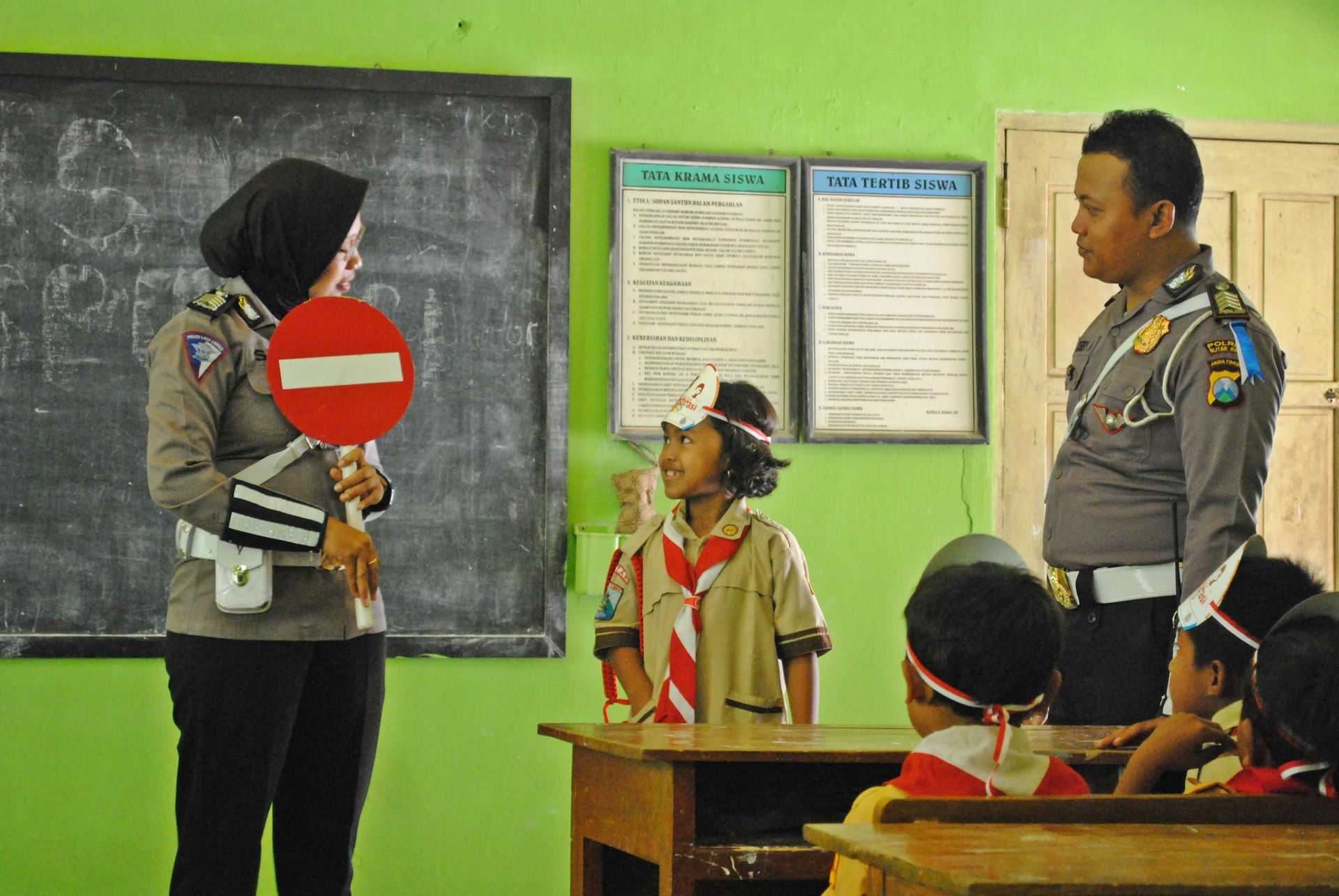Actionable Strategies for Sustainable Education Practices: Transforming Classrooms and Schools for a Greener Future


Photo by Husniati Salma on Unsplash
Introduction
Sustainable education practices are more than a trend-they represent a vital shift toward responsible stewardship of resources, thoughtful curriculum design, and the cultivation of environmentally conscious citizens. Embedding sustainability into the education sector not only minimizes ecological impact but also equips students with the knowledge and skills they need to address future environmental challenges. This article presents in-depth, actionable strategies to help schools and educators foster sustainability, with guidance for accessing relevant resources and implementing meaningful change.
Understanding Sustainable Education Practices
At its core, sustainable education integrates eco-friendly behaviors, resource conservation, and environmental literacy into daily school life. It involves adjusting both physical infrastructure and teaching methods to reduce waste, lower energy use, and build a culture of responsibility. Schools adopting these practices typically see benefits such as reduced operational costs, improved student engagement, and strengthened community connections [4] .
Implementing Eco-Friendly Practices in the Classroom
To start, educators can introduce a range of simple, impactful changes:
- Composting and Recycling: Setting up a compost bin for food scraps and ensuring that recycling is part of classroom routine reinforces responsible disposal habits. Teachers can role model recycling by consistently using bins themselves and making it visible to students [1] .
- Refillable Supplies: Switching to refillable whiteboard markers and encouraging students to use reusable containers reduces plastic waste. Schools in Australia alone discard millions of markers each year, but adopting refills can make a significant difference [1] .
- Energy-Free Days: Periodically holding “energy-free” days-where lights, electronics, and non-essential appliances are switched off-raises awareness about energy consumption and challenges students to find creative, low-impact ways to learn [1] .
- Active Environmental Learning: Incorporating lessons on environmental leaders, the lifecycle of products, and real-world environmental issues helps students connect classroom knowledge to global challenges [2] .
- Craft-Based Recycling: Engaging students in upcycling waste materials for art projects not only reduces landfill contributions but also enhances creativity and practical problem-solving skills [2] .
Building Sustainable School Infrastructure
Schools can make long-term impact by investing in their physical environment:
- Green Infrastructure: Initiatives like green roofs, efficient water management, and eco-friendly building materials improve insulation, reduce energy costs, and provide outdoor learning spaces. These changes support both environmental goals and student well-being [4] .
- Energy Conservation: Upgrading to LED lighting, installing solar panels, and using energy-efficient appliances can significantly lower a school’s carbon footprint. Implementing water-saving systems, such as rainwater harvesting, furthers resource efficiency [4] .
- Greening Classrooms: Introducing plants and maximizing natural light improves indoor air quality and creates a calming environment for learning. These changes are low-cost and accessible for most schools.
For schools interested in formal recognition, achieving Eco-Schools status may be possible. Steps generally include forming a sustainability committee, conducting an environmental review, and integrating eco-friendly practices into the curriculum. For specific requirements, it is recommended to visit the official Eco-Schools website or contact your local education authority.

Photo by Bayu Syaits on Unsplash
Embedding Sustainability in the Curriculum
Sustainability should be woven into all subjects, not confined to science or geography. Effective methods include:
- Project-Based Learning (PBL): Students can design real-world projects addressing local or global environmental issues-such as proposing changes to school infrastructure, conducting energy audits, or developing sustainable business plans [3] .
- Cross-Disciplinary Integration: Teachers can collaborate to incorporate sustainability into math (analyzing energy usage data), social studies (debating public policy), and language arts (writing persuasive essays on environmental topics) [3] .
- Outdoor Education: Activities such as “nature hunts” or fieldwork allow students to observe and appreciate local ecosystems firsthand. This fosters a deeper connection to the natural world and enhances retention [3] .
- Student Choice and Reflection: Allowing students to select sustainability projects that align with their interests increases engagement and ownership. Reflection exercises encourage critical thinking about the impact of their actions [3] .
Step-by-Step Guidance for Implementation
- Assess Current Practices: Begin by evaluating existing resource use, waste management, and curriculum content. Form a committee of staff, students, and community members to identify areas for improvement.
- Set Measurable Goals: Define clear, achievable objectives such as reducing paper use by 25% or increasing recycling participation by 50%. Track progress and adjust strategies as needed.
- Engage the Community: Involve parents, local businesses, and environmental organizations in sustainability initiatives. Community support often provides access to additional resources and expertise.
- Provide Professional Development: Teachers benefit from ongoing training on sustainability topics and curriculum integration. Seek out workshops from established educational organizations or local universities.
- Celebrate Successes: Recognize achievements through assemblies, newsletters, and local media. Sharing results boosts morale and encourages continued participation.
For schools seeking external support, many nonprofit organizations, local governments, and educational resource providers offer guidance and materials. If you are unsure where to start, you can search for “school sustainability toolkit” or “environmental education grants” alongside your state or regional name for localized opportunities.
Common Challenges and Solutions
Implementing sustainable education practices may meet resistance or practical obstacles. Common challenges include limited funding, lack of expertise, or competing curricular demands. Solutions may involve:
- Starting Small: Initiate low-cost projects like recycling drives or energy-free days before advancing to larger infrastructure investments.
- Seeking Partnerships: Collaborate with local environmental groups, businesses, or government agencies for funding, expertise, and volunteer support.
- Integrating Gradually: Embed sustainability concepts into existing lessons rather than creating separate units, making the transition smoother for teachers and students alike.
Alternative Approaches
Schools may also consider:
- Digital Learning Solutions: Using online platforms and digital textbooks reduces paper consumption and allows for more flexible, personalized learning.
- Community-Based Learning: Engaging students in local environmental projects, such as tree planting or habitat restoration, provides hands-on experience and strengthens civic responsibility.
- Advocacy and Policy Engagement: Older students can participate in debates, letter-writing campaigns, or policy research related to sustainability, fostering both academic and leadership skills.
Accessing Resources and Support
Many resources are available for schools and educators interested in sustainable practices. While specific program links may vary by region, you can:
- Contact your local education authority or department of education for recommended sustainability programs and funding opportunities.
- Search for recognized environmental education organizations in your area, such as the National Wildlife Federation or the Center for Green Schools, which provide curriculum guides and training.
- Look for sustainability-focused grants by combining search terms like “environmental education grant” with your city’s or state’s name.
- Consult with local government offices or community organizations for advice on starting or expanding green initiatives in your school.
Key Takeaways
Adopting sustainable education practices is an ongoing process that demands commitment, creativity, and community involvement. By starting with small, tangible actions and gradually building a culture that values sustainability, schools can nurture responsible citizens and help safeguard the planet for future generations.
References
- [1] Teach Starter (2023). 45 Sustainable Practices for the Environmentally Friendly Classroom.
- [2] Circular Computing (2023). 10 Great Ways To Make Your School More Sustainable.
- [3] Notion4Teachers (2023). Sustainability in Education: A Comprehensive Guide for Teachers.
- [4] Aldates Education (2023). Sustainability in Schools: Implementing Eco-Friendly Education Practices.






